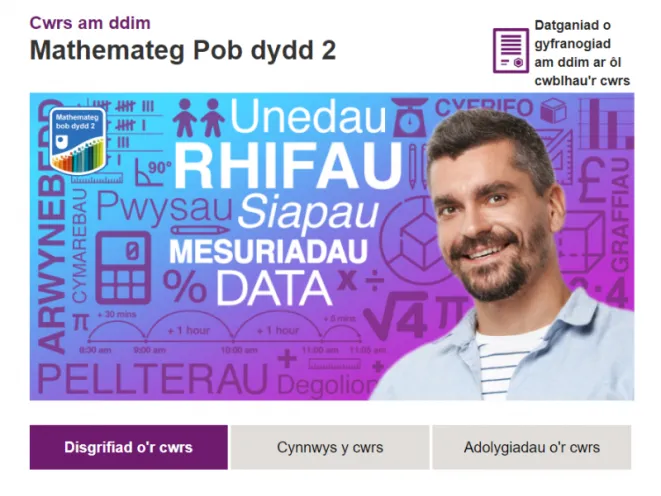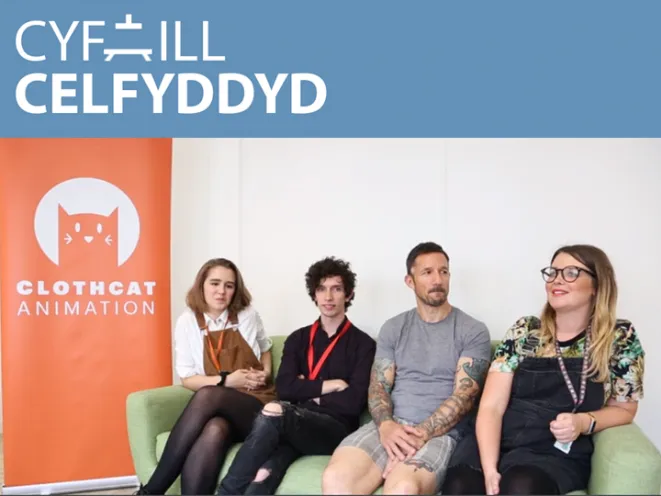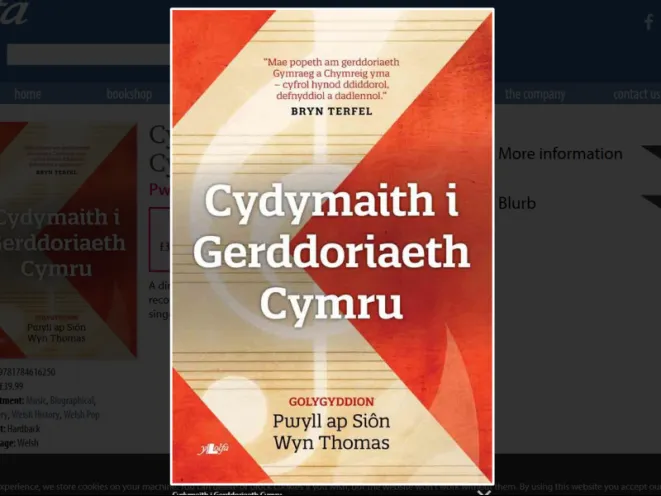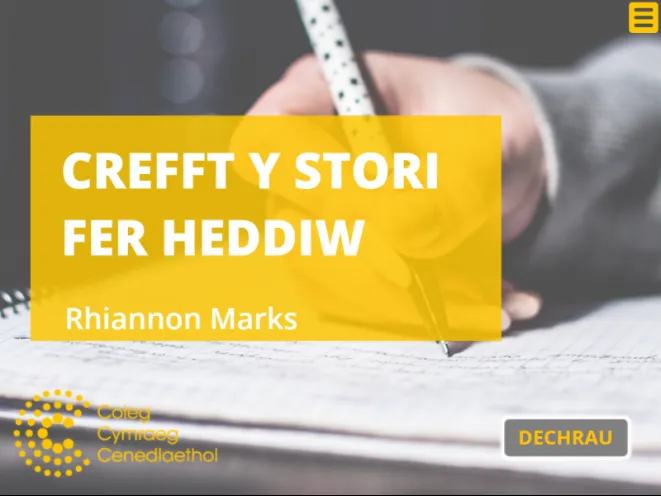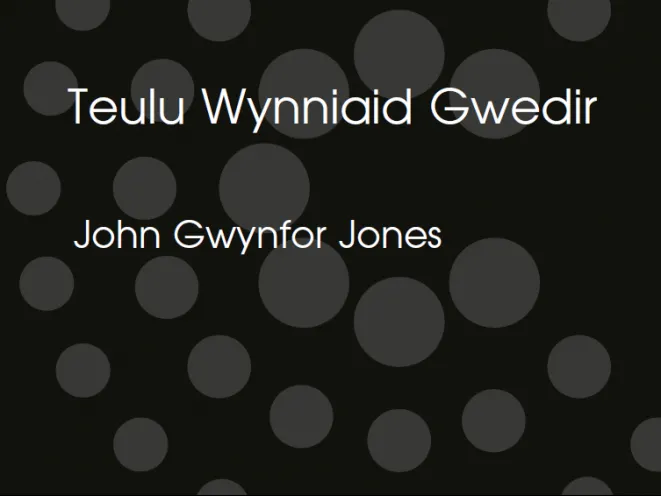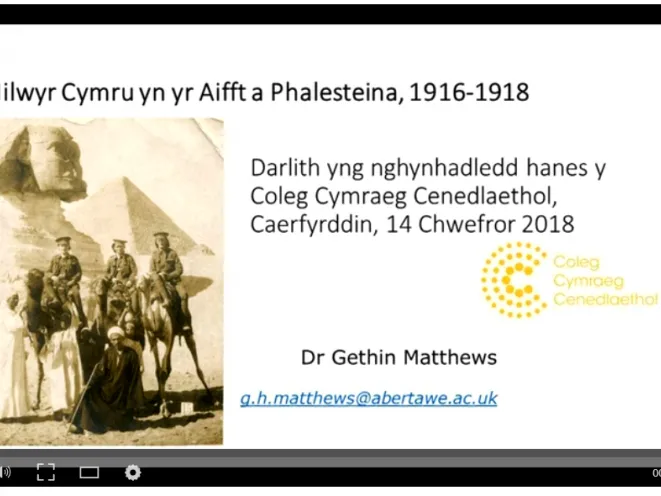Have you ever noticed how often you need maths skills in everyday life? This free course serves as good preparation for Level 1 Functional Skills in maths, and whilst it does not cover all aspects of the current 2019-20 curriculum, it is designed to inspire you to improve your current maths skills and help you to remember any areas that you may have forgotten. Working through the examples and interactive activities in this course will help you to, among other things, run a household or make progress in your career. To complete the course you will need access to a calculator and a notepad and pen. This is a free OpenLearn resource and a full description can be found by following the link.
Everyday Maths 1 (Welsh)
'Ar Frys' Fideos - using welsh in public service jobs.
These videos highlight the experience of seven people working in important but stressful jobs, who see the benefit of being able to speak to people in Welsh. If you're following a Public Service or Healthcare course, then you'll learn how to deal with the public - especially in an emergency or danger situation. By using both English and Welsh, you give the person in crisis the choice to speak the language they are most comfortable speaking. As a result, you will perform your work to a higher standard. These videos were produced by Coleg Cambria.
Mathemateg Pob Dydd 2
Having good maths skills are important for everyday life. In fact, you may have never noticed how often you use maths on a day-to-day basis. This free course is an introduction to Level 2 Essential Skills in maths that’s designed to inspire you to improve your current maths skills and help you to remember any areas that you may have forgotten. Working through the examples and interactive activities in this course will help you to, among other things, calculate how much paint you'll need for decorating, convert currencies or make progress in your career or further education. To complete this course you will need access to a calculator, a notepad and pen, and a protractor. This is a free OpenLearn resource and a full description can be found by following the link.
Cyfaill Celfyddyd
An Art Friend offers school and college and university students information on the professional arts scene in Wales and the possibilities of further study after leaving school. In addition, the resource demonstrates professional possibilities by offering an insight into experts across a wide range of areas of work in the creative world of Wales.
Cydymaith i Gerddoriaeth Cymru – gol. Pwyll ap Siôn a Wyn Thomas
Cyfeirlyfr awdurdodol sydd yn cwmpasu holl gyfoeth cerddoriaeth yng Nghymru o’r 6ed Ganrif hyd at y presennol. Tros 500 o gofnodion yn amrywio o gerddoriaeth gynnar i gerddoriaeth gyfoes, o gantorion gwerin i gerddorfeydd. Ffrwyth prosiect cydweithredol rhwng Ysgol Cerddoriaeth a’r Cyfryngau ym Mhrifysgol Bangor a’r Coleg Cymraeg Cenedlaethol yw’r Cydymaith i Gerddoriaeth Cymru. Cyhoeddir Cydymaith i Gerddoriaeth Cymru ar ffurf llyfr clawr caled gan wasg Y Lolfa, Talybont gyda chefnogaeth a chymorth ariannol Y Coleg Cymraeg Cenedlaethol. Mae'r holl gynnwys hefyd ar gael ar Esboniadur Cerddoriaeth Cymru, sef adnodd agored ar-lein gan y Coleg Cymraeg Cenedlaethol.
Crefft y Stori Fer Heddiw
Trafodaeth gyfoes ar ffurf y stori fer Gymraeg. Cyflwynir safbwyntiau chwe awdur cyfoes a fu'n cyhoeddi ym maes y stori fer yn ystod y blynyddoedd diwethaf sef Fflur Dafydd, Jon Gower, Aled Islwyn, Caryl Lewis, Llŷr Gwyn Lewis a Mihangel Morgan er mwyn taflu goleuni ar y modd y mae'r stori fer yn cael ei hystyried heddiw.
The development of the syntax of numerals in Welsh
The rules determining the forms of nouns and adjectives after numerals and the associated initial-consonant mutations in Middle Welsh are often puzzling to Modern Welsh readers of the language. This article sketches the rules and provides a synchronic account of them. It is shown that they are based on a coherent system where number (singular, dual, numerative, plural) is central. The linguistic changes that have occurred since then are documented in detail and dated using textual evidence. It is argued that these changes can best be understood as steps along a pathway towards a new, equally coherent system where all numeral phrases are treated as singular, and gender rather than number determines both form and mutations.
Darlith Flynyddol 2019: Teulu Wynniaid Gwedir
Darlith Flynyddol y Coleg Cymraeg Cenedlaethol 2019: Teulu Wynniaid Gwedir, gan yr Athro John Gwynfor Jones.
Youth Work MOOC
Interactive course introducing a number of aspects of youth work in Wales.
Milwyr Cymru yn yr Aifft a Phalesteina 1916-1918 - darlith gan Dr Gethin Matthews
Dr Gethin Matthews o Brifysgol Abertawe yn darlithio ar y testun 'Milwyr Cymru yn yr Aifft a Phalesteina 1916-1918'.
Ac Onide – J. R. Jones
Yma, mae J. R. Jones yn ymateb i argyfyngau dynol y ceir sôn amdanynt yn y Beibl ac i'r argyfyngau dynol yn ein hoes ni a gynhyrfodd feddylwyr tebyg i Wittgenstein, Simone Weil a Tillich. Ceir hefyd ffeil sain o J. R. Jones ei hun yn areithio. Teitl yr araith yw 'I Ti y Perthyn ei Ollwng', sef Rhan Tri: 3 o Ac Onide.
‘Beth yw’r ots gennyf i am Gymru?’: The out-migration and aspirations of young people from the Welsh heartland...
This article considers the out-migration of young people from the Welsh-speaking heartlands in terms of their aspirations and hopes for the future. The original doctoral research (2014), is based on Hywel Jones’ (2010) work, which argues that young people born outside of Wales are four times more likely to migrate from Wales than young people born here. The research attempts to establish the main factors that affect rates of out-migration among young people born outside of Wales and those born into non-native families. The article concludes that the main drivers of rates of out-migration among this group are factors such as sense of belonging and the extent of community integration, rather than solely economic factors. In particular, it examines how culture, nationality, and considerations pertaining to the Welsh language have an impact on this trend, which has important implications in terms of the linguistic retention of the ‘traditional’ Welsh speaking areas.



